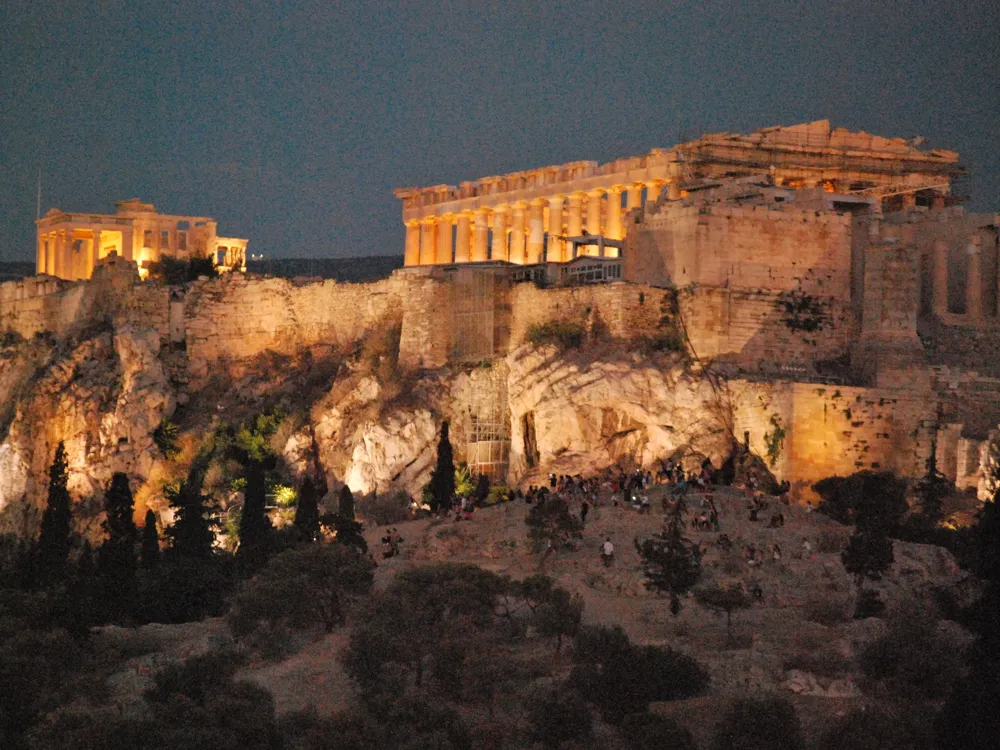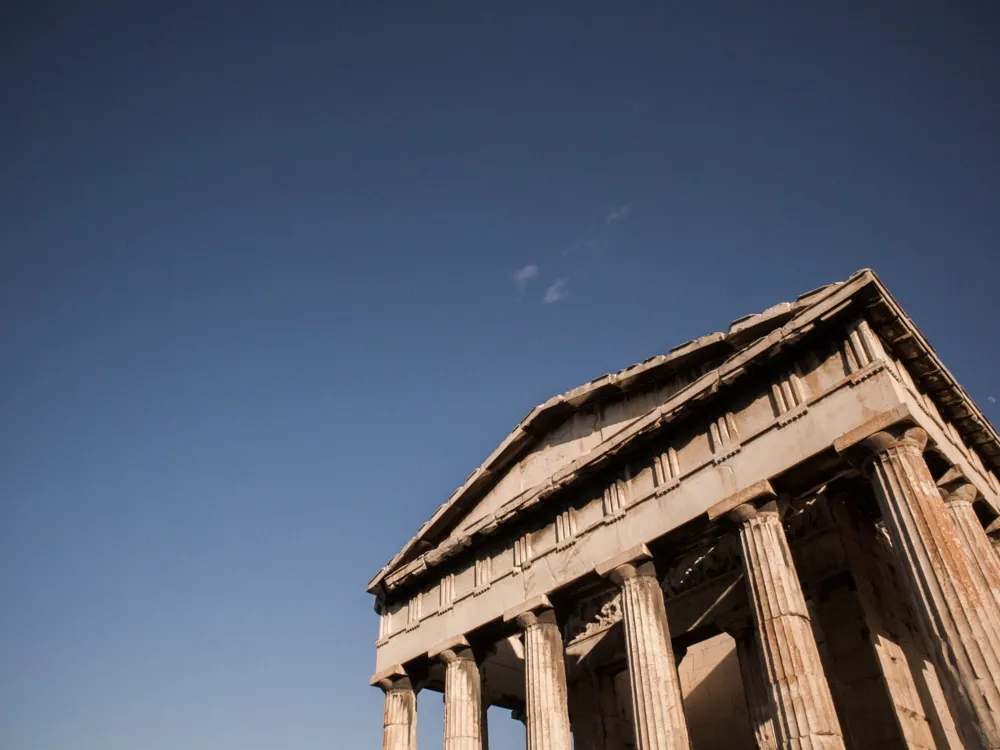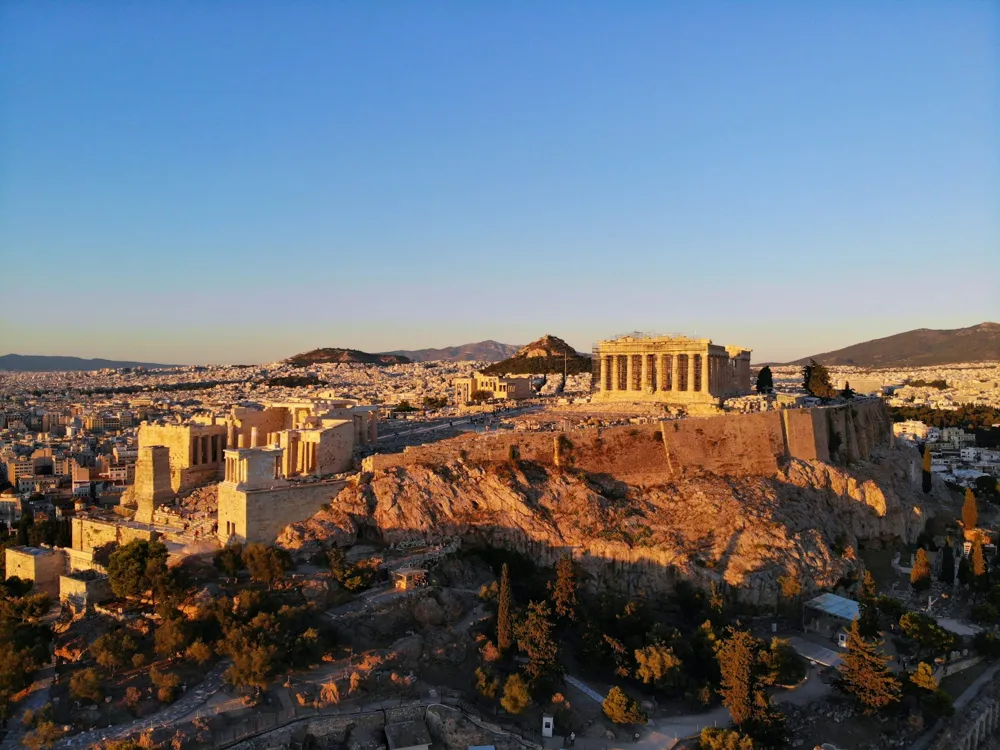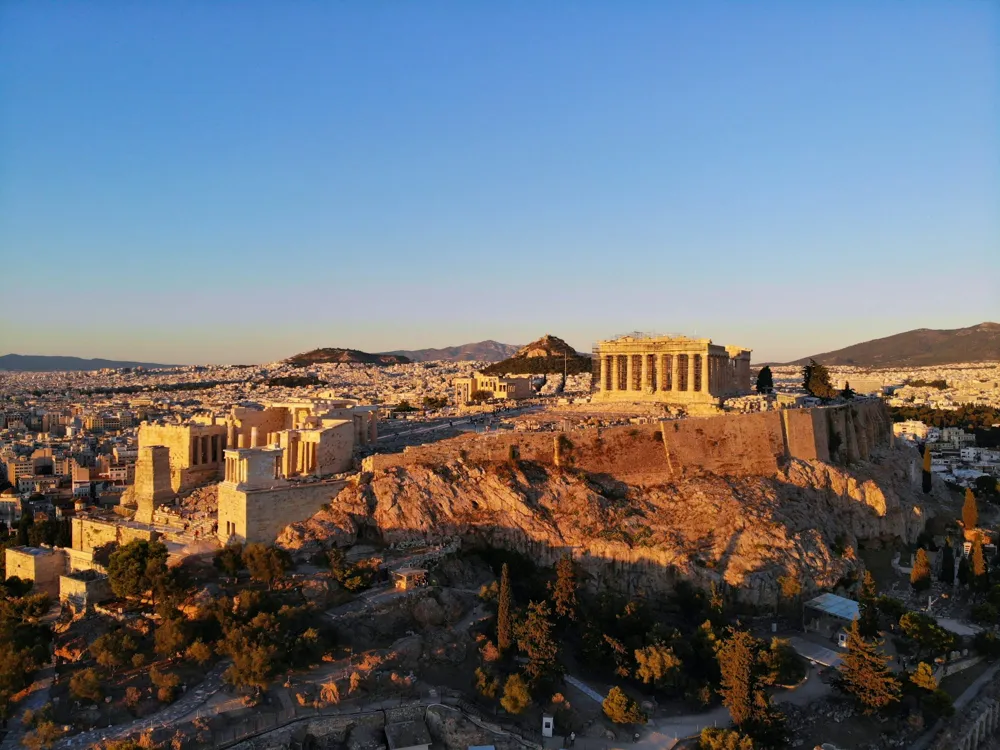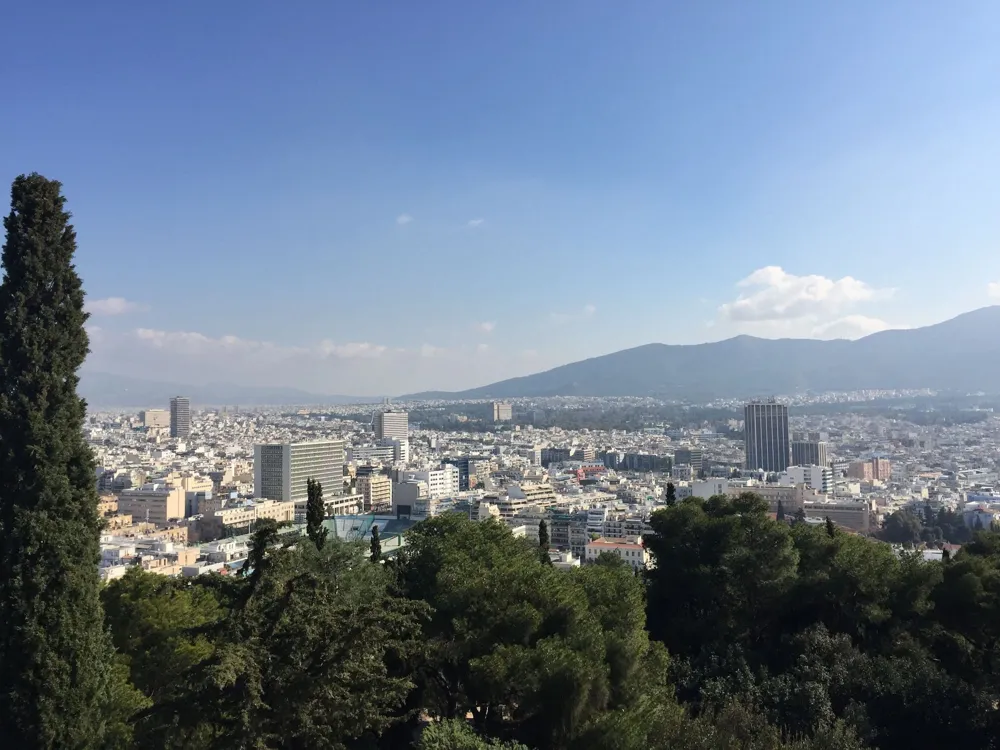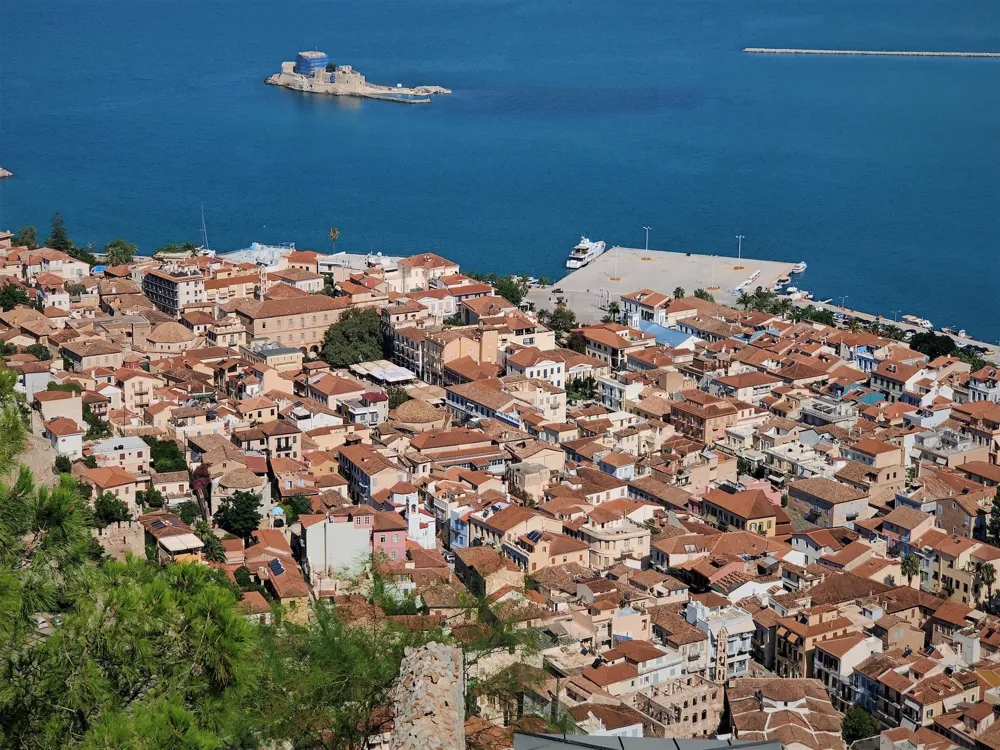Lycabettus Hill stands as a lamp in the heart of Athens, Greece, offering panoramic views of the megacity and its major milestones. Towering roughly 300 metres above ocean level, this limestone hill is a must-visit for anyone exploring the Greek capital. Its history is as rich as the megacity itself, with myths stating that it was formed when Athena, the goddess of wisdom, dropped a mountain she had been carrying for the construction of the Acropolis. moment, Lycabettus is a mix of natural beauty and artistic significance, offering a unique edge point to view Athens in all its glory. The objective significance of Lycabettus Hill dates back to ancient times. It has been a substantiation of the evolving cityscape of Athens, from the days of the classical age to the present. The hill has served colourful purposes over the centuries, from a religious point in ancient times to a sightseer magnet moment. It also played a strategic role in colourful objective events due to its commanding view of the megacity. Lycabettus Hill is shrouded in myths and legends, most especially its association with Athena. According to one legend, the hill was created when Athena accidentally dropped a gemstone she intended for the Acropolis. This myth adds a subcaste of mystical charm to the hill, intertwining it with the rich shade of Greek tradition. The hill is a green oasis in the civic terrain, hosting a variety of factory and beast life. The foliage includes typical Mediterranean species, offering a tranquil escape from the bustling megacity. The hill's biodiversity adds to its appeal, making it a favourite spot for nature suckers. Lycabettus Hill is in a high position for shutterbugs and rubberneckers. The peak offers unequalled views of Athens, including milestones like the Acropolis, the Panathenaic Stadium, and the Aegean Sea. It's a perfect spot for landing the substance of Athens from over. The armature of Lycabettus Hill is a mix of natural and man-made structures, each adding to the hill's appeal. The most prominent architectural point is the Tabernacle of St. George. Constructed in the 19th century, this small church is a masterpiece of simplicity and fineness. Its white walls and minimalistic design stand in stark contrast to the rugged natural surroundings, creating a graphic scene. The Chapel of St. George isn't only an architectural phenomenon but also a spiritual haven. The tabernacle, though small, features intricate details and traditional Greek Orthodox architectural rudiments. The interior is adorned with icons and religious artefacts, making it a place of deification and reflection. The Lycabettus Theatre is a testament to ultramodern Greek architecture. It combines functionality with aesthetics, offering a space that enhances the experience of performances. The theater's structure takes advantage of the hill's natural acoustics, making it a unique venue for musicals and events. The natural geography of Lycabettus Hill is as much a part of its architectural identity as the man-made structures. The pathways leading to the peak are lined with native foliage, and the rocky terrain adds a rugged charm. These natural pathways are an integral part of the hill's design, inviting callers to explore and enjoy the decor. Lycabettus Hill's architecture and natural geography are in harmony with the civic terrain of Athens. The hill provides a natural escape within the megacity, offering a unique mix of civic and natural rudiments. This integration makes Lycabettus a symbol of Athens' capability to save its natural beauty amidst civic development. Early morning or late autumn are ideal times to visit Lycabettus Hill. These times offer cooler temperatures and softer light for photography. Also, evenings from the hill are spectacular, making the late autumn a popular choice for callers. Callers can reach the peak by walking, taking a funicular road, or driving. The walk is steep but satisfying, offering multitudinous spots to rest and enjoy the view. The funicular provides a hastily and less emphatic option, while driving is ideal for those with limited mobility. Comfortable walking shoes, water, sunscreen, and a camera are essential for a visit to Lycabettus Hill. The walk to the top can be demanding, so proper footwear is pivotal. Staying doused is important, and sunscreen is recommended due to the lack of shade. A camera is a must to capture the stirring views. At the top of the hill, there's a café and eatery offering refreshments and refections with a view. Bathroom installations are also available. The theatre and tabernacle add to the artistic experience of the visit. Callers are encouraged to admire the natural terrain of Lycabettus Hill. This includes disposing of trash duly, staying on designated paths, and not disturbing the wildlife. Conserving the hill's natural beauty is a responsibility shared by all callers. Reaching Lycabettus Hill is fairly easy, anyhow of your mode of transportation. The hill is located in central Athens and is accessible by public transport, auto, or on bottom. The closest metro stations are Evangelismos and Megaro Moussikis, both on the blue line. From there, it's a short walk to the base of the hill. For those driving, parking is available at the base, though spaces can be limited. The funicular road offers a direct route to the top and is a popular option for those looking to avoid the steep rise. Read More:Overview of Lycabettus Hill, Athens
Callers to Lycabettus Hill can enjoy a variety of lodestones. The hill is capped by the 19th-century Tabernacle of St. George, an idyllic whitewashed church that adds to the serene air. The open-air theatre at the top hosts colourful musical and artistic events, immersing callers in Greek culture against a backdrop of stunning megacity views. The hill is also home to a range of foliage and fauna, furnishing a stimulating discrepancy to the civic geography below.History and Significance
Myths and Legends
Flora and Fauna
Viewpoints and Photography
Architecture of Lycabettus Hill
Besides the tabernacle, Lycabettus also features an open-air theatre. This amphitheatre is an ultramodern construction designed to host artistic events while offering stunning views of the megacity. Its design integrates seamlessly with the natural terrain, maintaining the hill's aesthetic while furnishing a venue for performances.Chapel of St. George
Lycabettus Theatre
Natural Landscape and Pathways
Integration with the City
Tips for Visiting Lycabettus Hill
Best Time to Visit
Getting to the Top
What to Bring
Facilities and Amenities
Respect the Environment
How To Reach Lycabettus Hill
For a more scenic route, callers can conclude to walk to the peak. The path is well pronounced and offers several graphic spots to rest and enjoy the view. The walk takes roughly 30 twinkles and provides a more immersive experience of the hill's natural beauty.
Lycabettus Hill
Athens
₹ 25,800 onwards
View athens Packages
Weather :
Tags : Hills & Valley
Timings : 08:00 - 18:00
Entry Fee : Free
Planning a Trip? Ask Your Question
Athens Travel Packages
View All Packages For Athens
Top Hotel Collections for Athens

Private Pool

Luxury Hotels

5-Star Hotels

Pet Friendly
Top Hotels Near Athens
Other Top Ranking Places In Athens
View All Places To Visit In athens
Faq on Athens
What is Lycabettus Hill in Athens?
Lycabettus Hill is a prominent landmark in Athens, Greece, rising 300 meters above sea level. It offers panoramic views of the city and is home to the iconic Chapel of St. George.
How do you get to Lycabettus Hill?
Visitors can reach Lycabettus Hill by foot, car, or funicular railway. There are several pathways leading to the top, and the funicular departs from Kolonaki neighborhood.
What are the opening hours of Lycabettus Hill?
Lycabettus Hill is accessible to visitors throughout the day and night. However, specific facilities such as the funicular railway and restaurants may have varying operating hours.
Is there an entrance fee for Lycabettus Hill?
There is no entrance fee to access Lycabettus Hill itself. However, there may be charges for services like the funicular railway or dining options at the top.
What can you do at Lycabettus Hill?
At Lycabettus Hill, visitors can enjoy breathtaking views of Athens, explore the Chapel of St. George, take leisurely walks along the pathways, and relax at the hilltop cafes and restaurants.
View athens Packages
Weather :
Tags : Hills & Valley
Timings : 08:00 - 18:00
Entry Fee : Free
Planning a Trip? Ask Your Question
Athens Travel Packages
View All Packages For Athens
Top Hotel Collections for Athens

Private Pool

Luxury Hotels

5-Star Hotels

Pet Friendly
Top Hotels Near Athens
Other Top Ranking Places In Athens
View All Places To Visit In athensFaq on Athens
What is Lycabettus Hill in Athens?
Lycabettus Hill is a prominent landmark in Athens, Greece, rising 300 meters above sea level. It offers panoramic views of the city and is home to the iconic Chapel of St. George.
How do you get to Lycabettus Hill?
Visitors can reach Lycabettus Hill by foot, car, or funicular railway. There are several pathways leading to the top, and the funicular departs from Kolonaki neighborhood.
What are the opening hours of Lycabettus Hill?
Lycabettus Hill is accessible to visitors throughout the day and night. However, specific facilities such as the funicular railway and restaurants may have varying operating hours.
Is there an entrance fee for Lycabettus Hill?
There is no entrance fee to access Lycabettus Hill itself. However, there may be charges for services like the funicular railway or dining options at the top.
What can you do at Lycabettus Hill?
At Lycabettus Hill, visitors can enjoy breathtaking views of Athens, explore the Chapel of St. George, take leisurely walks along the pathways, and relax at the hilltop cafes and restaurants.








